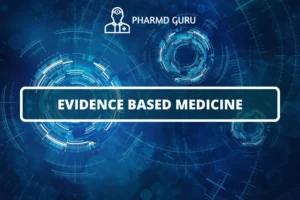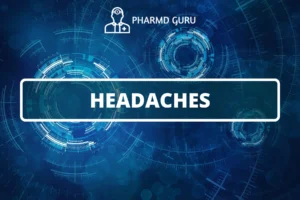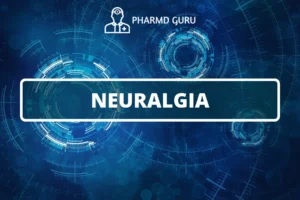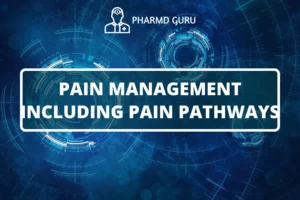Affective disorders, also known as mood disorders, encompass a range of mental health conditions characterized by disturbances in mood, emotions, and energy levels. These disorders can significantly impact a person’s daily life, relationships, and overall well-being. In this article, we will explore the etiopathogenesis, or underlying causes and mechanisms, of affective disorders and discuss the pharmacotherapy options used in their treatment.
SCROLL DOWN TO THE BOTTOM OF THIS PAGE FOR ACTUAL NOTES.
Table of Contents
- Introduction
- Understanding Affective Disorders
- Types of Affective Disorders
- Etiopathogenesis of Affective Disorders
- Neurochemical Imbalances
- Genetic and Environmental Factors
- Clinical Features and Diagnosis
- Treatment Options
- Pharmacotherapy for Affective Disorders
- Psychotherapy and Other Non-Pharmacological Approaches
1. Introduction
Affective disorders are characterized by disturbances in mood, ranging from episodes of depression to periods of elevated mood or mania. These disorders can manifest as major depressive disorder, bipolar disorder, or other related conditions. Understanding the etiopathogenesis of affective disorders is essential for accurate diagnosis, effective treatment, and improved outcomes.
2. Understanding Affective Disorders
Affective disorders encompass a spectrum of conditions that affect an individual’s emotional state, energy levels, and overall functioning. The two primary types of affective disorders are:
- Major Depressive Disorder (MDD): This condition is characterized by persistent feelings of sadness, loss of interest or pleasure in activities, changes in appetite and sleep patterns, fatigue, difficulty concentrating, and thoughts of death or suicide.
- Bipolar Disorder: Bipolar disorder involves episodes of both depression and mania. Manic episodes are characterized by elevated mood, increased energy, racing thoughts, impulsivity, and reckless behavior.
3. Types of Affective Disorders
Affective disorders include various subtypes and related conditions, such as:
- Persistent Depressive Disorder (Dysthymia): A chronic form of depression characterized by long-lasting depressive symptoms.
- Seasonal Affective Disorder (SAD): A type of depression that occurs at specific times of the year, typically during winter when there is less natural sunlight.
- Cyclothymic Disorder: A milder form of bipolar disorder with recurrent periods of hypomanic and depressive symptoms.
4. Etiopathogenesis of Affective Disorders
The etiopathogenesis of affective disorders is complex and involves multiple factors:
5. Neurochemical Imbalances
Imbalances in certain neurotransmitters, such as serotonin, norepinephrine, and dopamine, have been implicated in the development of affective disorders. For example, decreased levels of serotonin are associated with depression, while elevated levels of dopamine and norepinephrine can contribute to manic episodes in bipolar disorder.
6. Genetic and Environmental Factors
Genetic factors play a significant role in the predisposition to affective disorders. Individuals with a family history of these disorders have a higher risk of developing them. However, the interaction between genetic and environmental factors is critical. Stressful life events, trauma, substance abuse, and chronic medical conditions can also contribute to the onset or exacerbation of affective disorders.
7. Clinical Features and Diagnosis
Diagnosing affective disorders involves a comprehensive evaluation of symptoms, medical history, and ruling out other potential causes. Healthcare professionals use standardized diagnostic criteria, such as those outlined in the Diagnostic and Statistical Manual of Mental Disorders (DSM-5), to make an accurate diagnosis. Symptoms may include persistent feelings of sadness, loss of interest or pleasure, changes in appetite and sleep patterns, fatigue, difficulty concentrating, and thoughts of death or suicide.
8. Treatment Options
The treatment of affective disorders typically involves a combination of pharmacotherapy, psychotherapy, and lifestyle modifications. The choice of treatment depends on the specific diagnosis, severity of symptoms, individual preferences, and the presence of any comorbid conditions.
9. Pharmacotherapy for Affective Disorders
Pharmacotherapy plays a crucial role in the management of affective disorders. Medications used in the treatment of these disorders include:
- Antidepressants: These medications, such as selective serotonin reuptake inhibitors (SSRIs) and serotonin-norepinephrine reuptake inhibitors (SNRIs), help alleviate symptoms of depression by increasing the availability of neurotransmitters in the brain.
- Mood Stabilizers: Mood stabilizers, such as lithium, are commonly used in the treatment of bipolar disorder to regulate mood and prevent episodes of mania or depression.
- Antipsychotics: In some cases, antipsychotic medications may be prescribed to manage severe symptoms, psychotic features, or as an adjunct to other treatments.
It is essential to work closely with a healthcare professional to determine the most appropriate medication, dosage, and duration of treatment. Regular monitoring and adjustment of medication may be necessary to achieve optimal outcomes.
10. Psychotherapy and Other Non-Pharmacological Approaches
Psychotherapy, such as cognitive-behavioral therapy (CBT), interpersonal therapy (IPT), and dialectical behavior therapy (DBT), is often recommended as an adjunct to pharmacotherapy. These therapeutic approaches help individuals understand and manage their emotions, develop coping skills, and improve overall functioning.
In addition to psychotherapy, lifestyle modifications, such as regular exercise, healthy eating habits, stress management techniques, and sufficient sleep, can contribute to overall well-being and may help alleviate symptoms.
ACTUAL NOTES:




